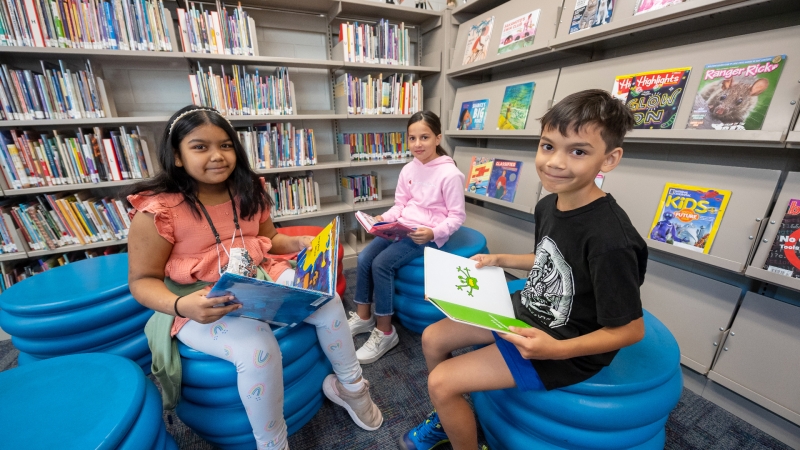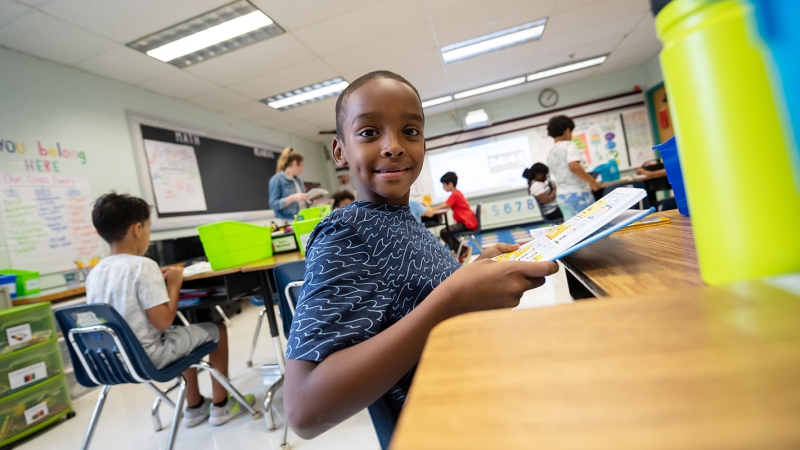
Evidence-Based Curriculum, Instruction and Assessments
Equitable Access to Literacy Focus Area
Focus Area
Design and implement Evidence-Based Curriculum, Instruction, and Assessments Aligned to Science Based Reading Research
Indicators of Success
Eliminate literacy achievement gaps for student groups including:
- Black
- Hispanic
- English Learners
- Economically Disadvantaged
- Students with Disabilities
Aspiration
All students will meet grade level criterion expectations. (metrics below)
Metrics
- Kindergarten: Phonological Awareness Literacy Screener (PALS) (Meets/Does Not Meet Expectations)
- Grades 1-2
- iReady (Scale Score, Grade Level Proficiency)
- Passage Reading Fluency (On or Approaching Grade Level, 50th-74th Percentile & 75th -99th Percentile)
- Grade 3:
- Grades 4-6
- iReady (Scale Score, Grade Level Proficiency)
- SOL (On Grade Level Scale Score >399, Pass Proficient/Pass Advanced)
- Grades 6-11
- Reading Inventory (Meets Proficient/Advanced )
- SOL (Scale Score >399, Pass Proficient/Pass Advanced)
- Number of students who require Tier 2 and 3 Intervention
- Percent of students identified for special education services in literacy
Strategic Actions
Each strategic action is organized by year of implementation with the desired goal of sustained support.
Legend
- DA = Developing Awareness
- BK = Building Knowledge
- TP = Translating into Practice
(Beginning Implementation) - AR = Advancing and Refining
(Mid Implementation) - SI = Sustaining with Integrity
(Full Implementation)
Note: Items with an * are required by the Virginia Literacy Act
| Strategic Action | 2021 - 22 School Year |
2022 - 23 School Year |
2023 - 24 School Year |
2024 - 25 School Year |
2025 - 26 School Year |
2026 - 27 School Year |
|---|---|---|---|---|---|---|
| Engage in the procurement process to identify evidence-based core and intervention literacy instructional materials* | BK | TP | TP | AR | SI | SI |
| Build collective knowledge and understanding of evidence-based theory, assessment, and instructional practices aligned to the science of reading* | BK | TP | TP | AR | SI | SI |
| Develop, introduce, and implement daily explicit and systematic phonemic awareness and phonics lessons in grades K-2* | BK | TP | TP | AR | SI | SI |
| Develop curriculum and content resources that cultivate skills and support learners to read and write across a variety of genres and disciplines. | DA | BK | TP | TP | AR | SI |
| Implement evidenced-based screening and diagnostic assessment practices in grades K-6* | DA | BK | TP | TP | AR | SI |
| Implement daily word study lessons in grades 3-6 to include morphology and syllabication units | DA | BK | TP | TP | AR | SI |
| Revise K-6 literacy block to create teaching and learning opportunities for oral language development, fluent word reading, small group instruction, language comprehension, writing, and intervention* | DA | BK | TP | TP | AR | SI |
| Implement small skill-based groups informed by ongoing evidenced-based diagnostic data* | DA | BK | TP | TP | AR | SI |
| Provided Multi Tiered intervention support using evidence-based intervention resources aligned to Science Based Reading Research* | DA | BK | TP | TP | AR | SI |
| Develop tools, resources, and meeting structures to improve collective collaboration across schools and the division | DA | BK | TP | TP | AR | SI |
| Utilize evidence-based literacy curriculum for the entire literacy block* | DA | DA | BK | TP | AR | SI |
| Adopt culturally and linguistically responsive instructional resources | DA | DA | BK | TP | AR | SI |
| Provide daily, explicit, systematic, and cumulative instruction in phonemic awareness, phonics, vocabulary, fluency, comprehension, and writing to ensure all students receive a solid foundation in literacy* | DA | DA | BK | TP | AR | SI |
| Ensure schools have appropriate time embedded in the school schedule to provide intervention support* | DA | DA | BK | TP | AR | SI |
| Introduce and use progress monitoring routines to ensure students are making appropriate progress with interventions in place* | DA | DA | BK | TP | AR | SI |
| Create individual reading plans for each student who demonstrate specific literacy needs* | DA | DA | DA | TP | AR | SI |
| Create systems and processes to develop, implement and monitor student progress on student reading plans in collaboration with teachers and families* | DA | DA | DA | TP | AR | SI |
| Implement evidenced-based screening and diagnostic assessment practices in grades 6-12* | DA | DA | DA | TP | AR | SI |
Related Pages

Cultivate Equitable and Culturally Responsive Practices
Strategic actions, metrics, success indicators, etc for this focus area.

Professional Learning: Evidence-Based Literacy Practices
Strategic actions, metrics, success indicators, etc for this focus area.

Family and School Partnership
Strategic actions, metrics, success indicators, etc for this focus area.

Equitable Access to Literacy Key Terms
Key words and definitions that are used in the Equitable Access to Literacy (EAL) Plan.
